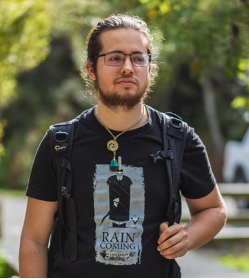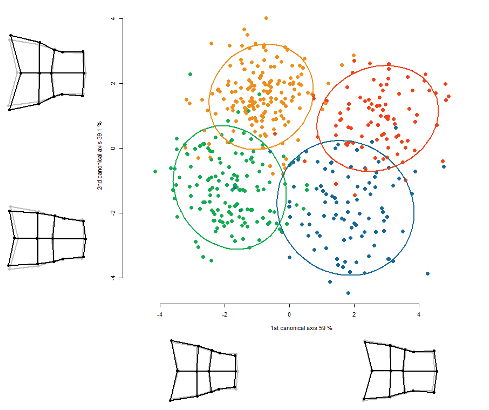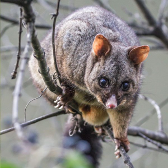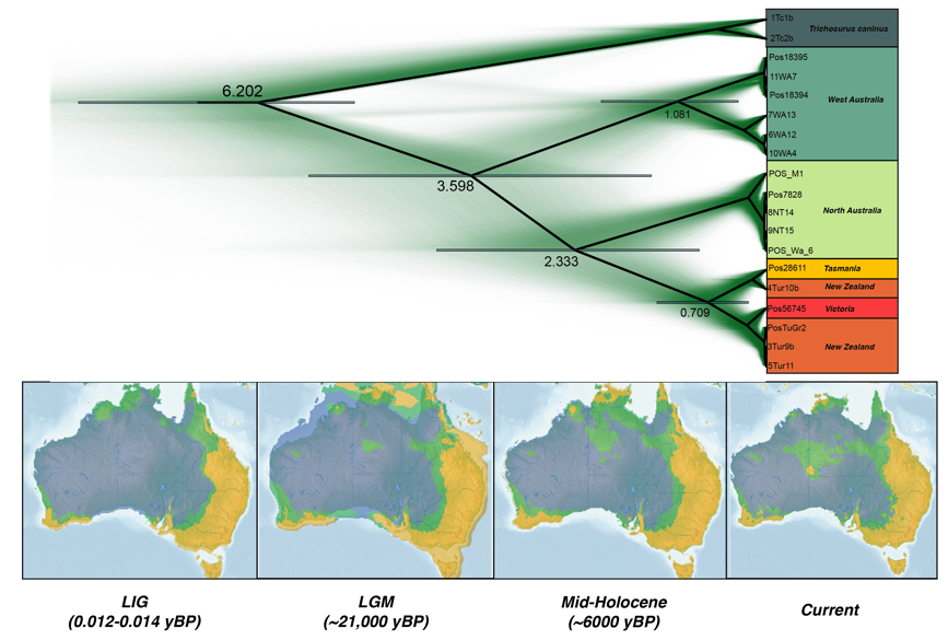|
|
| David Carmelet-Rescan |
| |
| During my first year of my masterate I took part of a population genetic project on cod in Baltic sea. I applied statistical models on environmental variables to explain the separation between two populations of cod in Kattegat sea in DTU Aqua on Silkeborg (Denmark). I first came to New Zealand in January 2018 as an intern to complete my Master degree. During the internship with Mary and Steve I focused on performing geometric morphometric analyses of New Zealand alpine grasshoppers to help understand their population structure and evolution. I also perform population genetic analysis to explore possible correlations and the evolutionary history of grasshopper populations that are highlypartitioned in the alpine zone of the Southern Alps. Eight months after the end of my masterate I came back to start a PhD on brushtail possums. The different research projects I have been involved with have led my interest into several fields such as population genetic, bioinformatis and an increasing interest in genomic analysis. |
 |
PhD research
Following the introduction of about 100 brushtail possums to New Zealand in 1837, the feral possum population in New Zealand grew to ~48 million, leading to the transmission of TB and damage to native biota. Aotearoa New Zealand spends ~$100 million a year controlling possums, primarily through application of 1080 to >8 million hectares/year. Abundant genetic diversity in New Zealand possums, arising from their origin from several Australian populations, is indicated by colour polymorphism (rust, black, grey), varying responses to 1080 and trapping, and preliminary genetic surveys. Estimation of kill rates and rates of population recovery depend primarily on trapping and poisoning. These methods cannot differentiate between growth from survivors and immigration. Management with toxins is directed mainly at controlling possum numbers where they are of most concern (for TB spread and/or native biodiversity). This yields a complex pattern of possum population density across the country, and repeated bouts of “natural” selection in space and time have the potential to drive adaptive responses in possums that further complicate spatial demographics. As a result of multiple introductions, the genetic diversity among New Zealand possums is unusually high, yielding rich potential for genetic adaption to a variety of selective pressures, including toxin resistance.
The first focus of my PhD work is use mitochondrion and nuclear markers to investigate brushtail possums phylogeny in New Zealand and Australia to better understand the relationship between different populations and lineages at a bigger level. I went further using niche modelling and bayesian evolutionary analysis trying to understand the history of trichosurus vulpecula in Australia prior to their introduction in New Zealand. Currently I am using a transcriptomic approach to study genomic diversity in this species and to examine the basis of natural toxin resistance already observed in West Australian brushtail possum populations. Building a transcriptome from RNAseq data of New Zealand possums and West Australian possums will allow us to explore the potential source of this resistance traits. |
  |

|
Bayesian calibrated phylogeny of mitochondrial lineage of Trichosurus vulpecula across its range and modelling of brushtail possum niche in Australia through late Pleistocene climatic oscillations
|
Academic Publications
Carmelet-Rescan D, Morgan-Richards M, Koot EM, Trewick SA. 2021. Climate and ice in the last glacial maximum explain patterns of isolation by distance inferred for alpine grasshoppers. Insect Conservation and Diversity doi: 10.1111/icad.12488
Qualifications
2017 Master degree in Biology, Ecology and Evolution, Université de Poitiers
2015 Bachelor degree in Biology and Ecology, Université de Poitiers |
|
|
|